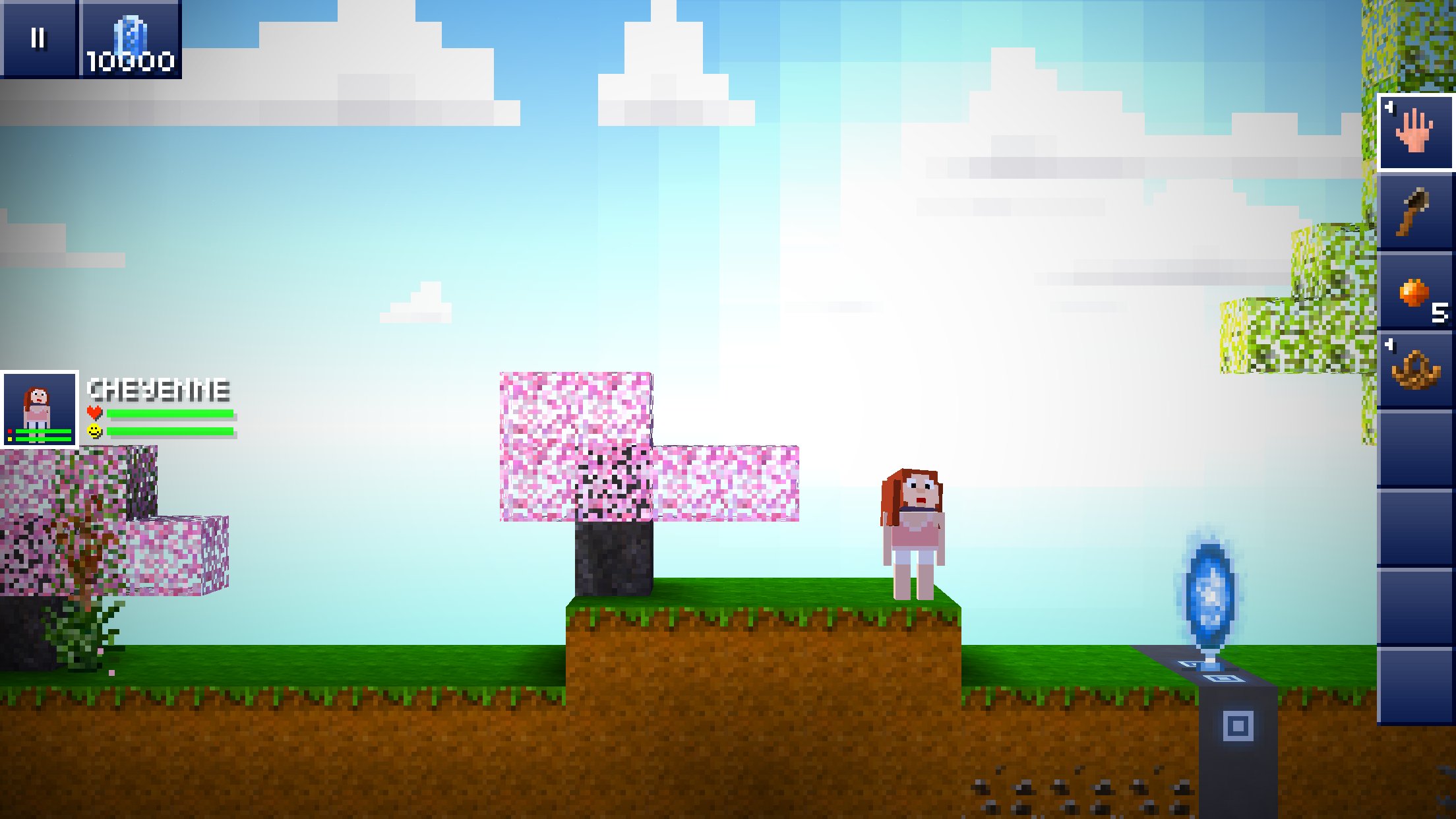The short turnaround time between the iPhone 6 Plus’ announcement and release has left developers scrambling to support the larger iPhone, which has some new technical wrinkles because of its higher resolution. It presents a conundrum because where the iPhone 6 renders @2X, the same pixel density as previous Retina Displays, the iPhone 6 Plus internally renders @3X, an entirely new pixel density. To help explain what is happening in action, David Frampton of Majic Jungle sent over some screenshots showing off The Blockheads (Free), and the differences between an unoptimized iPhone 6 Plus game, and what it would look like:
Here’s The Blockheads running as it is right now on the iPhone 6 Plus simulator. Frampton says “So by default, the buttons are physically larger than they need to be, everything is simply scaled up to fill the screen."
Here’s The Blockheads with the proper Launch Screen, which triggers rendering at the iPhone 6 Plus’ native resolution:
Frampton explains the differences and why they exist:
“When I render everything at the native resolution I can show a wider view, and scale the buttons down to be the right physical size for the display and allow them to take up less screen real-estate. Rendering natively is also crisper, both the UI/text/buttons etc. and the edges of polygons are sharper, as they are not being scaled up post-render."
While Frampton’s engine was set up to where just a simple tweak would provide a usable iPhone 6 Plus interface, it’s not going to be that simple for all games. There’s also new concerns. The iPhone 6 Plus uses more “points" than the iPhone 6. It’s difficult to explain, but this guide explains the gist of it: the iPhone 6 Plus shows more content than the iPhone 6 because it has more points, while it also renders at a higher resolution.
As for The Blockheads, the screens Frampton provided are from a beta version of 1.6, which should be coming out in a few weeks.


